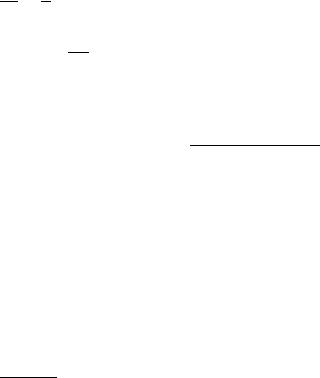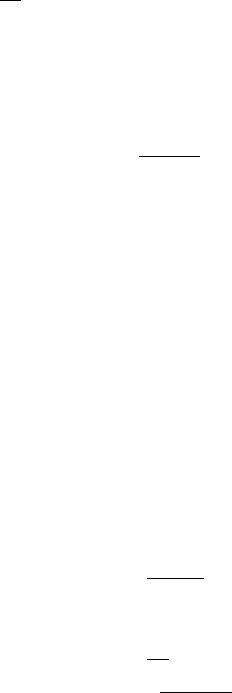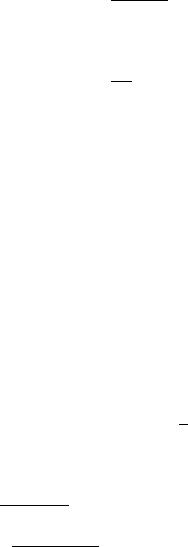
- •Functions
- •The Concept of a Function
- •Trigonometric Functions
- •Inverse Trigonometric Functions
- •Logarithmic, Exponential and Hyperbolic Functions
- •Limits and Continuity
- •Introductory Examples
- •Continuity Examples
- •Linear Function Approximations
- •Limits and Sequences
- •Properties of Continuous Functions
- •The Derivative
- •The Chain Rule
- •Higher Order Derivatives
- •Mathematical Applications
- •Antidifferentiation
- •Linear Second Order Homogeneous Differential Equations
- •Linear Non-Homogeneous Second Order Differential Equations
- •Area Approximation
- •Integration by Substitution
- •Integration by Parts
- •Logarithmic, Exponential and Hyperbolic Functions
- •The Riemann Integral
- •Volumes of Revolution
- •Arc Length and Surface Area
- •Techniques of Integration
- •Integration by formulae
- •Integration by Substitution
- •Integration by Parts
- •Trigonometric Integrals
- •Trigonometric Substitutions
- •Integration by Partial Fractions
- •Fractional Power Substitutions
- •Numerical Integration
- •Integrals over Unbounded Intervals
- •Discontinuities at End Points
- •Improper Integrals
- •Sequences
- •Monotone Sequences
- •Infinite Series
- •Series with Positive Terms
- •Alternating Series
- •Power Series
- •Taylor Polynomials and Series
- •Applications
- •Parabola
- •Ellipse
- •Hyperbola
- •Polar Coordinates
- •Graphs in Polar Coordinates
- •Areas in Polar Coordinates
- •Parametric Equations
3.5. HIGHER ORDER DERIVATIVES |
137 |
Two curves are said to be orthogonal at each point (x0, y0) of their intersection if their tangent lines are perpendicular. Show that the following families of curves are orthogonal.
11.x2 + y2 = r2, y + mx = 0
12.(x − h)2 + y2 = h2, x2 + (y − k)2 = k2
Compute y0 and y00 in exercises 13–20. |
|
|
||
13. |
4x2 + 9y2 = 36 |
14. |
4x2 − 9y2 = 36 |
|
15. |
x2/3 + y2/3 = 16 |
16. |
x3 + y3 = a3 |
|
17. |
x2 |
+ 4xy + y2 = 6 |
18. |
sin(xy) = x2 + y2 |
19. |
x4 |
+ 2x2y2 + 4y4 = 26 |
20. |
(x2 + y2)2 = x2 − y2 |
3.5Higher Order Derivatives
If the vertical height y of an object is a function f of time t, then y0(t) is called its velocity, denoted v(t). The derivative v0(t) is called the acceleration of the object and is denoted a(t). That is,
y(t) = f(t), y0(t) = v(t), v0(t) = a(t).
We say that a(t) is the second derivative of y, with respect to t, and write
y00(t) = a(t) or |
d2y |
= a(t). |
2 |
||
|
dt |
|
Derivatives of order two or more are called higher derivatives and are represented by the following notation:
y0(x) = |
|
dy |
|
, y00(x) = |
d2y |
, y000(x) = |
d3y |
, . . . , y(n)(x) = |
dny |
. |
|||||||||||||
|
dx |
2 |
3 |
n |
|||||||||||||||||||
|
|
|
|
|
|
|
|
dx |
|
|
|
|
|
|
dx |
|
dx |
||||||
The definition is given as follows by induction: |
|
|
|
||||||||||||||||||||
|
d2f |
d |
|
df |
|
|
dnf |
|
d |
|
|
dn−1f |
|
|
|
||||||||
|
|
= |
|
|
|
|
|
and |
|
= |
|
|
|
|
, n = 2, 3, 4, · · · . |
||||||||
|
dx2 |
dx |
dx |
dxn |
dx |
dxn−1 |
|||||||||||||||||

CHAPTER 3. DIFFERENTIATION
f(n)(x) = dnf dxn
which is read as “the nth derivative of f with respect to x.”
Example 3.5.1 Compute the second derivative y00 |
for each of the following |
||||
functions: |
|
|
|
|
|
(i) |
y = sin(3x) |
(ii) |
y = cos(4x2) |
(iii) |
y = tan(3x) |
(iv) |
y = cot(5x) |
(v) |
y = sec(2x) |
(vi) |
y = csc(x2) |
Part (i) |
y0 = 3 cos(3x), y00 = −9 sin(3x) |
|
|
|
|
|
Part (ii) |
y0 |
= −8x sin(4x2), y00 = −8[sin(4x2) + x · (8x) · cos(4x2)] |
||||
Part(iii) |
y0 |
= 3 sec2(3x), y00 = 3[2 sec(3x) |
· |
sec(3x) tan(3x) |
· |
3] |
|
|
|||||
|
y00 |
= 18 sec2(3x) tan(3x) |
|
|
|
|
Part(iv) y0 = −5 csc2(5x), y00 = −10 csc(5x)[(− csc 5x cot 5x) · 5]
y00 = 50 csc2(5x) cot(5x)
Part(v) y0 = 2 sec(2x) tan(2x)
y00 = 2[(2 sec(2x) tan(2x)) · tan(2x) + sec(2x) · (2 sec2(2x))]
y00 = 4 sec(2x) tan2(2x) + 4 sec3(2x)
Part(vi) y0 = −2x csc(x2) cot(x2)
y00 = −2[1 · csc(x2) cot(x2) + x(−2x csc(x2) cot(x2)) · cot(x2)
3.5. HIGHER ORDER DERIVATIVES |
139 |
+x csc(x2) · (−2x csc2(x2))]
=−2 csc(x2) cot(x2) + 4x2 csc(x2) cot2(x2) + 4x2 csc3(x2)
Example 3.5.2 Compute the second order derivative of each of the following functions:
(i) |
y = sinh(3x) |
(ii) |
y = cosh(x2) |
(iii) |
y = tanh(2x) |
(iv) |
y = coth(4x) |
(v) |
y = sech(5x) |
(vi) |
y = csch(10x) |
Part (i) y0 = 3 cosh(3x), y00 = 9 sinh(3x)
Part (ii) y0 = 2x sinh(x2), y00 = 2 sinh(x2) + 2x(2x cosh x2) or
y00 = 2 sinh(x2) + 4x2 cosh(x2)
Part (iii) y0 = 2 sech2(2x), y00 = 2 · (2 sech(2x) · (−sech(2x) tanh(2x) · 2)),
y00 = −8 sech2(2x) tanh(2x)
Part (iv) y0 = −4 csch2(4x), y00 = −4(2(csch(4x)) · (−csch(4x) coth(4x) · 4))
y00 = 32 csch2(4x) coth(4x)
Part (v) y0 = −5 sech (5x) tanh(5x)
y0 = −5[−5 sech(5x) tanh(5x) · tanh(5x) + sech(5x) · sech2(5x) · 5]
y0 = 25 sech(5x) tanh2(5x) − 25 sech3(5x).
Part (vi) y0 = −10 csch(10x) coth(10x)
y00 = −10[−10 csch(10x) coth(10x) · coth(10x)

140 |
CHAPTER 3. DIFFERENTIATION |
|
+ csch(10x)(−10 csch2(10x))] |
y00 |
= 100 csch(10x) coth2(10x) + 100 csch3(10x) |
Example 3.5.3 Compute the second order derivatives for the following functions:
(i) |
y = ln(x2) |
(ii) |
y = ex2 |
(iii) |
log10(x2 + 1) |
(iv) |
x2 |
(v) |
y = arcsin x |
(vi) |
y = arctan x |
y = 10 |
Part (i) y0 = x2x2 = x2 = 2x−1
y00 = −2x−2 = −x22.
Part (ii) y0 = 2xex2 , y00 = 2ex2 + 4x2ex2 = (2 + 4x2)ex2 .
Part (iii) y0 |
= |
1 |
|
|
|
2x |
|
, y00 |
= |
2 |
|
|
(x2 + 1) |
1 − x · 2x |
, |
||
ln 10 |
· |
x2 + 1 |
ln 10 |
(x2 |
·+ 1)2 |
||||||||||||
|
|
|
|
|
|||||||||||||
y00 |
= |
2 |
|
· |
1 − x2 |
|
|
|
|
|
|
|
|||||
|
|
|
ln 10 |
(x2 + 1)2 |
|
|
|
|
|
|
|||||||
Part (iv) y0 = 10x2 · (ln 10) · 2x
y00 = 2 ln 10[10x2 + x · 10x2 ln 10 · 2x]
y00 = 10x2 [2 ln 10 + (2 ln 10)2x2]
Part (v) y0 |
1 |
= (1 − x2)−1/2 |
||
= |
√ |
|
||
1 − x2 |
||||

3.5. HIGHER ORDER DERIVATIVES |
141 |
|||||||||||
y00 = |
|
−1 |
(1 |
− |
x2)−3/2( 2x) |
|
||||||
|
2 |
|
|
|
|
|
− |
|
|
|||
y00 = |
|
|
|
x |
|
|
. |
|
|
|
|
|
|
|
|
|
|
|
|
|
|
|
|||
|
|
|
|
|
2 3/2 |
|
|
|
|
|||
|
|
(1 − x ) |
|
|
|
|
|
|
||||
Part (vi) y0 = |
|
|
1 |
|
= (1 + x2)−1 |
|
|
|||||
|
|
|
|
|||||||||
1 + x2 |
|
|
||||||||||
y00 = |
− |
1(1 + x2)−2 |
· |
2x = |
−2x |
|
||||||
(1 + x2)2 |
|
|||||||||||
|
|
|
|
|
|
|
|
|
||||
Example 3.5.4 Compute the second derivatives of the following functions:
(i) y = arcsinh x |
|
|
(ii) |
y = arccosh x |
(iii) y = arctanh x |
||
From Section 1.4, we recall that |
|
|
|||||
|
√ |
|
|
) |
|
|
|
arcsinh x = ln(x + |
1 + x2 |
|
|
||||
|
√ |
|
|
, x ≥ 1 |
|
||
arccosh x = ln(x + |
x2 − 1) |
|
|||||
arctanh x = |
1 |
ln |
1 + x |
= |
1 |
[ln(1 + x) − ln(1 − x)], |x| < 1. |
||||
|
|
|
|
|
|
|
||||
2 |
|
1 |
− |
x |
2 |
|||||
|
|
|
|
|
|
|
|
|
|
|
Then
Part (i)
|
|
y0 = |
√ |
|
|
1 |
|
|
|
|
|
|
|||
|
|
1 + x2 |
|
||||
d |
2 |
|
d |
|
(1 + x2)−1/2 |
||
|
(arcsinh x) = |
||||||
|
2 |
dx |
|||||
dx |
|
|
|
||||
= −21 (2x)(1 + x2)−3/2
x
= −(1 + x2)3/2 .

142 |
|
|
|
|
|
CHAPTER 3. DIFFERENTIATION |
|||||||||||
Part (ii) |
|
|
|
|
|
|
|
|
|
|
|
|
|
|
|||
|
|
|
|
y0 = |
√ |
|
|
|
|
1 |
|
|
|
, x > 1 |
|||
|
|
|
|
|
|
|
|
|
|
|
|
||||||
|
|
|
|
x |
2 |
− 1 |
|||||||||||
|
|
d2 |
|
|
|
|
|
|
|
||||||||
|
|
(arccosh x) = |
|
d |
|
(x2 − 1)−1/2 |
|||||||||||
|
dx2 |
|
dx |
||||||||||||||
|
|
|
|
= |
−1 |
(2x)(x2 − 1)−3/2 |
|||||||||||
|
|
|
|
2 |
|
||||||||||||
|
|
|
|
= − |
|
|
|
|
|
|
|
x |
|
, x > 1 |
|||
|
|
|
|
(x2 − 1)3/2 |
|||||||||||||
Part (iii) |
|
|
|
|
|
|
|
|
|
|
|
|
|
|
|||
|
|
|
|
y0 = |
1 |
|
, |
|x| < 1. |
|||||||||
|
|
|
|
|
|||||||||||||
2 |
|
1 − x2 |
|||||||||||||||
|
|
d |
|
|
d |
|
|
|
|
|
|
||||||
|
|
|
|
(arctanh x) = |
|
(1 − x2)−1 |
|||||||||||
|
|
dx |
dx |
||||||||||||||
|
|
|
|
= (−1)(1 − x2)−2(−2x) |
|||||||||||||
|
|
|
|
= |
|
|
|
|
|
|
|
x |
, |x| < 1. |
||||
|
|
|
|
(1 − x2)2 |
|||||||||||||
Example 3.5.5 Find y00 for the equation x2 + y2 = 4.
First, we find y0 by implicit di erentiation.
2x + 2yy0 = 0 → y0, xy .
Now, we di erentiate again with respect to x.
y00 = |
y · 1 − xy0 |
|
|
|
||||
|
|
|
|
y2 |
|
|
|
|
= |
− |
y − x(−x/y) |
(replace y0 by |
− |
x/y) |
|||
|
y2 |
|||||||
|
|
|
|
|||||
= − |
y2 |
+ x2 |
|
(Why?) |
|
|
||
|
y3 |
|
|
|||||
= − |
4 |
|
|
(since x2 + y2 = 4) |
||||
|
|
|
||||||
y3 |
|
|
||||||

3.5. HIGHER ORDER DERIVATIVES |
143 |
Example 3.5.6 Compute y00 for x3 + y3 = 4xy.
From Example 25 in the last section we found that
y0 = |
4y − 3x2 |
if 3y2 |
− |
4x = 0. |
|
3y2 − 4x |
|
6 |
To find y00, we di erentiate y0 with respect to x to get
y00 = (3y2 − 4x)(4y0 − 3x2) − (4y − 3x2)(6yy0 − 4) , 3y2 − 4x 6= 0. 3y2 − 4x
In order to simplify any further, we must first replace y0 by its computed value. We leave this as an exercise.
Example 3.5.7 Compute f(n)(c) for the given f and c and all natural numbers n:
(i) |
f(x) = sin x, c = 0 |
(ii) |
f(x) = cos x, x = 0 |
(iii) |
f(x) = ln(x), c = 1 |
(iv) |
f(x) = ex, c = 0 |
(v) |
f(x) = sinh x, x = 0 |
(vi) |
f(x) = cosh x, x = 0 |
To compute the general nth derivative formula we must discover a pattern and then generalize the pattern.
Part (i) f(x) = sin x, f0(x) = cos x, f00(x) = − sin x, f000(x) = cos x, f4(x) = sin x. Then the next four derivatives are repeated and so on. We get
f(4n)(n) = sin x, f(4n+1)(x) = cos x, f(4n+2)(x) = − sin x, f(4n+3)(x) = − cos x.
By evaluating these at c = 0, we get
f(4n)(0) = 0, f(4n+2)(0); f(4n+1)(0) = 1 and f(4n+3)(0) = −1,
for n = 0, 1, 2, · · ·
Part (ii) This part is similar to Part (i) and is left as an exercise.
Part (iii) f(x) = ln x, f0(x) = x−1, f00(x) = (−1)x−2, f(3)(x) = (−1)(−2)x−3, . . . ., f(n)(x) = (−1)(−2) . . . (−(n − 1))x−n = (−1)n−1(n − 1)!x−n, f(n)(1) = (−1)n−1(n − 1)!, n = 1, 2, . . .

144 |
CHAPTER 3. |
DIFFERENTIATION |
Part (iv) f(x) = ex, |
f0(x) = ex, f00(x) = ex, . . . , |
f(n)(x) = ex, f(n)(0) = |
1, n = 0, 1, 2, . . . |
|
|
Part (v) f(x) = sinh x, f0(x) = cosh x, f00(x) = sinh x, . . . f(2n)(x) = sinh x, f(2n+1)(x) = cosh x, f(2n)(0) = 0, f(2n+1)(0) = 1, n = 0, 1, 2, . . .
Part (vi) f(x) = cosh x, |
f0(x) = sinh x, f00(x) = cosh x, . . . , f(2n)(x) = |
cosh x, f(2n+1)(x) = sinh x, |
f(2n)(0) = 1, f(2n+1)(0) = 0, n = 0, 1, 2, . . . |
Exercises 3.5 Find the first two derivatives of each of the following functions f.
1. f(t) = 4t3 − 3t2 + 10
3. f(x) = (x2 + 1)3
5. f(x) = e3x sin 4x
x2
7. f(x) = 2x + 1
9. f(x) = ln(x2 + 1)
11. f(x) = 3 sinh(4x) + 5 cosh(4x)
13.f(x) = x tan x
15.f(x) = arctan(3x)
2.f(x) = 4 sin(3x) + 3 cos(4x)
4.f(x) = x2 sin(3x)
6.f(x) = e2x cos 4x
8.f(x) = (x2 + 1)10
10.f(x) = log10(x4 + 1)
12.f(x) = tanh(3x)
14.f(x) = x2ex
16.f(x) = arcsinh (2x)
17. f(x) = cos(nx) 18. f(x) = (x2 + 1)100
Show that the given y(x) satisfies the given equation:
19.y = A sin(4x) + B cos(4x) satisfies y00 + 16y = 0
20.y = A sinh(4x) + B cosh(4x) satisfies y00 − 16y = 0
3.5. HIGHER ORDER DERIVATIVES |
145 |
21.y = e−x(a sin(2x) + b cos(2x)) satisfies y00 − 2y0 + 2y = 0
22.y = ex(a sin(3x) + b cos(3x)) satisfies y00 − 2y0 + 10y = 0
Compute the general nth derivative for each of the following:
23. |
f(x) = e2x |
25. |
f(x) = cos 4x |
27. |
f(x) = sinh(2x) |
29. |
f(x) = (x + 1)100 |
24. f(x) = sin 3x
26.f(x) = ln(x + 1)
28.f(x) = cosh(3x)
30. f(x) = ln 1+x
1−x
Find y0 and y00 for the following equations:
31. x4 + y4 = 20 |
32. x2 + xy + y2 = 16 |
